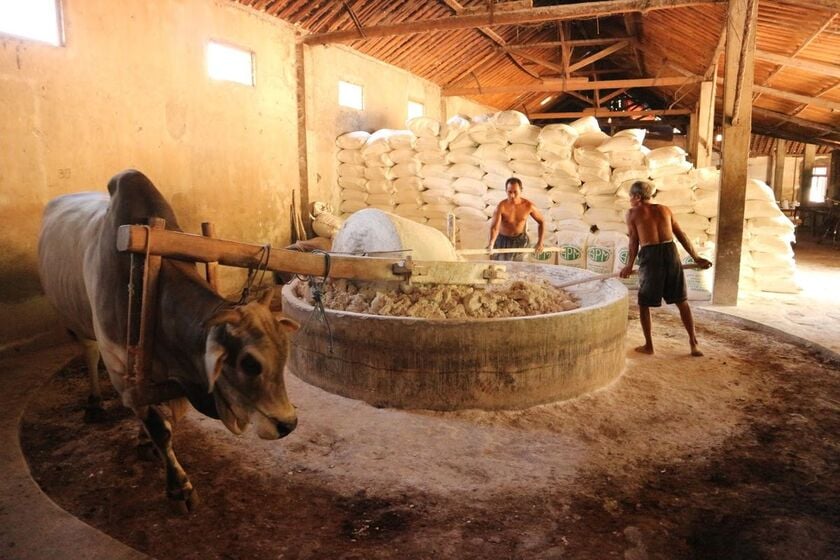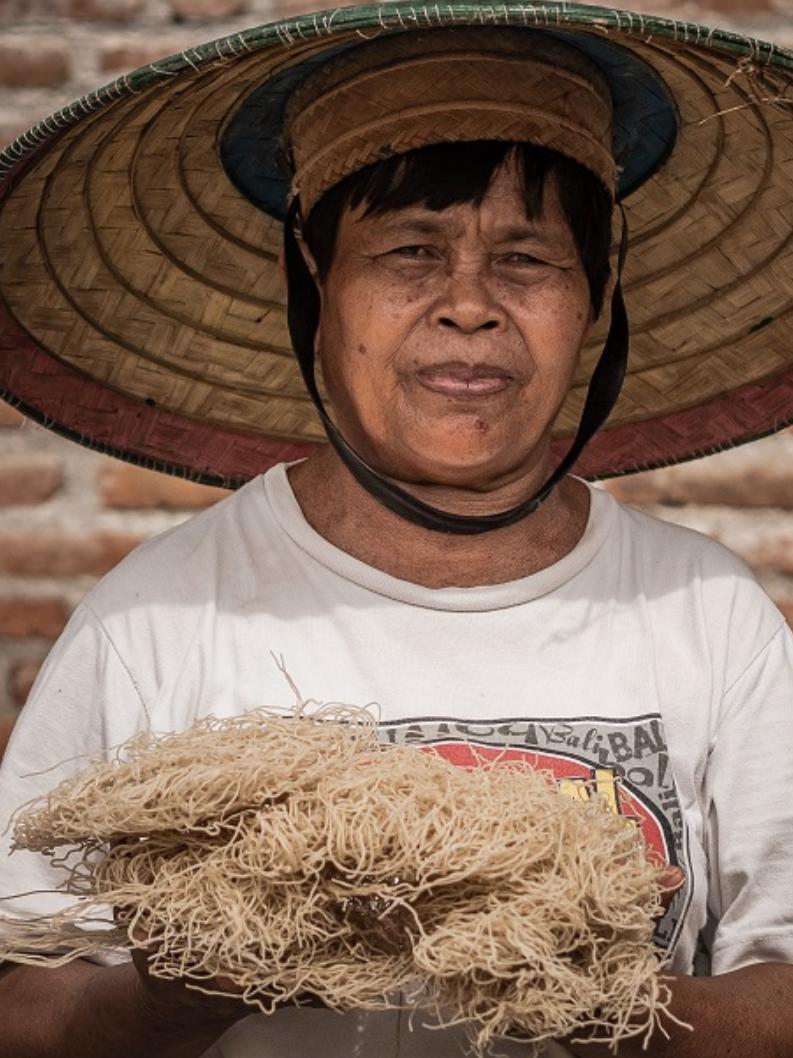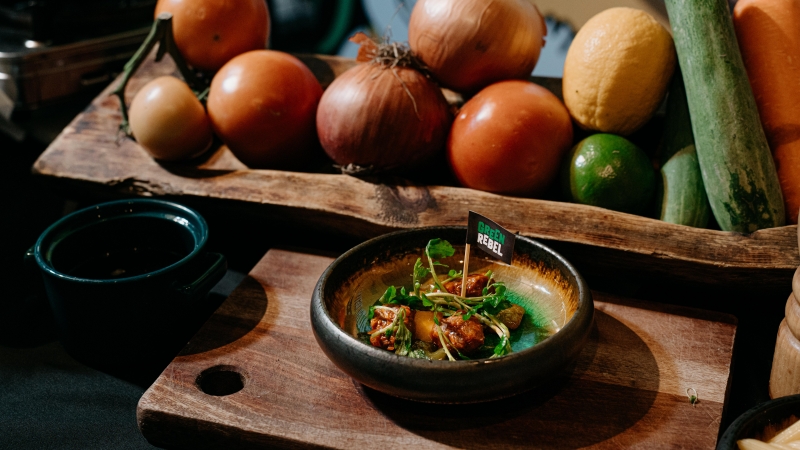Dirty noodles, also known as mie lethek, have a slightly dull color because they are handmade by using ox power to grind and mix cassava flour. This color is a unique feature of mie lethek and contributes to the unique flavor of the dish. Because of the sap of cassava, one of the ingredients that sticks to the noodles, it creates a brown color instead of white or yellow like normal noodles.
The brown color of mie lethek is the result of the handmade production process and natural ingredients. This color contributes to the unique flavor and character of the dish, and represents the traditional value in Yogyakarta culinary culture. However, the brown color can also be misleading and affect the aesthetics for some people.

Dirty noodles are a popular dish in Indonesia.
The image of cows being used to crush dried cassava in the production of mie lethek is a unique and characteristic feature of this dish. The traditional production method has been used for thousands of years and contributes to the special flavor of mie lethek. The cassava is peeled, chopped and dried before use. On the cow's shoulder is a wooden beam connected to a one-ton concrete block that slowly rotates with each step. As the cow moves in a circle, the concrete block crushes the dried cassava into a fine powder.
Nowadays, some mie lethek production facilities have adopted modern machinery to replace the method of using cows to grind cassava. However, many locals still believe that using cows to grind cassava will produce mie lethek that is tastier and has a traditional flavor.

People still keep the traditional way of making noodles with the help of animals.
Despite its name "dirty noodles", mie lethek is popular among Indonesians for its delicious taste and high nutritional value. The chewy, fatty noodles combined with the rich broth create an irresistible appeal.
The main ingredients include tapioca starch, cassava starch and water. After mixing, the flour is pressed into a square mold and then steamed. This is also the most difficult step in the noodle making process. Up to now, the factory still uses a wood-fired steamer. After steaming, the next step is to mix and grind the flour in a mortar pulled by oxen until it becomes a smooth mass and ready to be pressed into noodles.
The resulting noodles are steamed a second time and left to cool overnight. The next morning, the noodles are rinsed with water to remove some of the excess resin and dried under the sun continuously from 6am to 2pm. When the noodles are completely dry, they are packaged for delivery everywhere. The “dirty noodles” are considered to have a chewy texture and rich flavor, making them delicious when used in dry noodles, soup noodles, or mixed noodles with rice.

Despite its unflattering name, this noodle dish still offers a very appealing culinary experience.
Mie lethek, a unique traditional noodle dish of Yogyakarta, has gone through the ups and downs of history and proven its strong vitality against the changes of time.
Despite its long history, "mie lethek" almost disappeared from Yogyakarta's culinary scene when instant noodles became popular in the 1970s. During this time, the boom of cheap instant noodles posed a big challenge to mie lethek. The manual production process and higher cost made mie lethek gradually overshadowed by the convenience and affordability of instant noodles. Many mie lethek production facilities were forced to close, putting the dish in danger of disappearing from Yogyakarta's culinary scene.
However, mie lethek has proven its enduring appeal and had a spectacular "revival" in the early 2000s. Along with the development of the tourism industry, international tourists are increasingly interested in exploring local culture and cuisine. Mie lethek, with its unique taste and high cultural value, attracts tourists' attention and contributes to promoting the popularity of this dish.
Soon, mie lethek became a staple in Bantul family meals. Street vendors began selling it. Realizing the cultural value and economic potential of mie lethek, the local people and government joined hands to preserve and promote this dish.
Preserving the traditional method of making mie lethek, although “quite laborious”, plays an important role in preserving the taste and cultural value of this dish. That is why people here try to keep things as they are, keeping the traditional manual method.

The "revival" of this noodle is a testament to the traditional culture gradually regaining its position in Indonesia.
The people of Yogyakarta are aware of the importance of preserving the local culinary cultural heritage. Therefore, they strive to preserve the traditional method of producing mie lethek, they seek solutions to improve the efficiency and productivity of production to ensure the quality and unique flavor of the dish. The harmonious combination of preserving traditional values and applying technical advances is the key to ensuring the sustainable development of mie lethek in the future.
The "revival" of mie lethek is a testament to the strong vitality of traditional Indonesian cuisine. This dish is not only a delicious dish but also a cultural symbol of the people of Yogyakarta, contributing to preserving the local identity and traditions.
Visitors to Yogyakarta can easily find mie lethek in restaurants, local eateries and even in supermarkets. Mie lethek is a unique and attractive dish, the pride of the people of Yogyakarta. If you have the opportunity to visit Yogyakarta, remember to enjoy this noodle dish to feel the unique flavor and learn more about the local culinary culture.




































